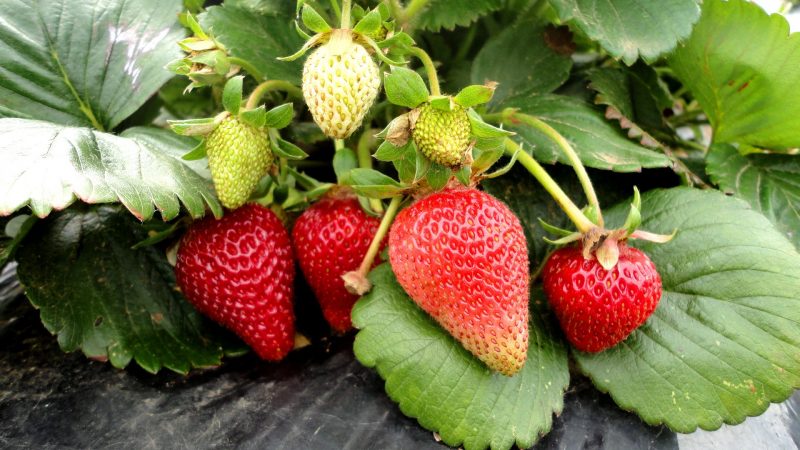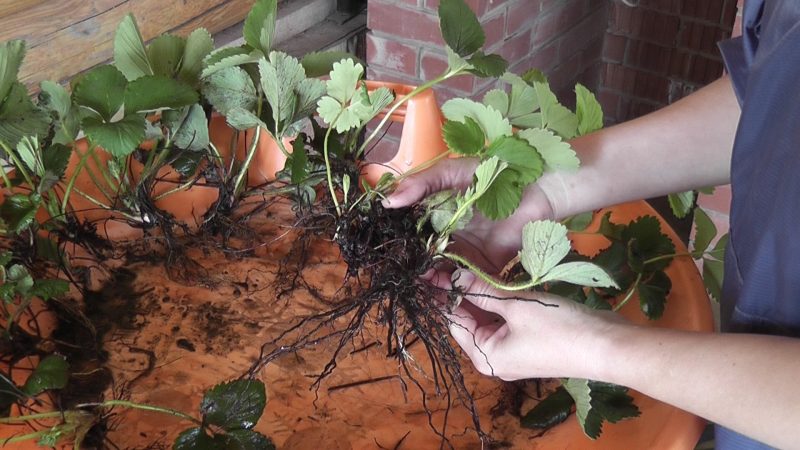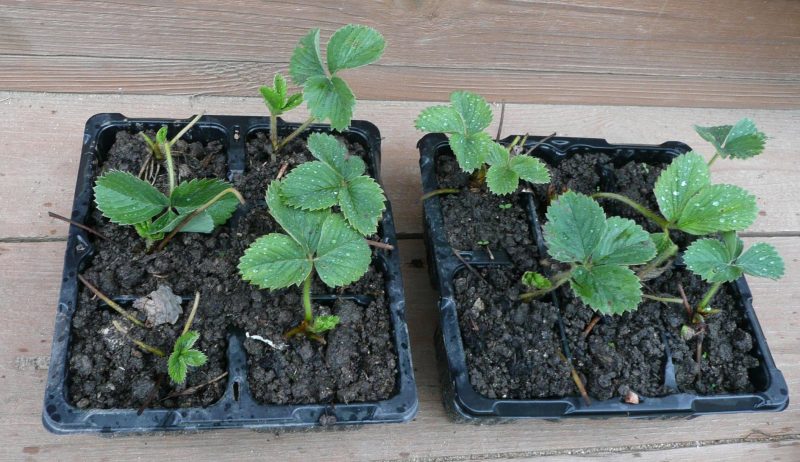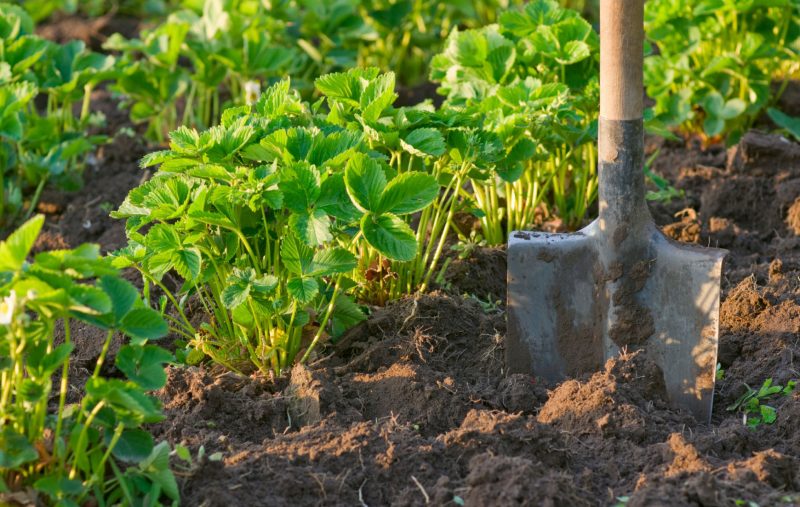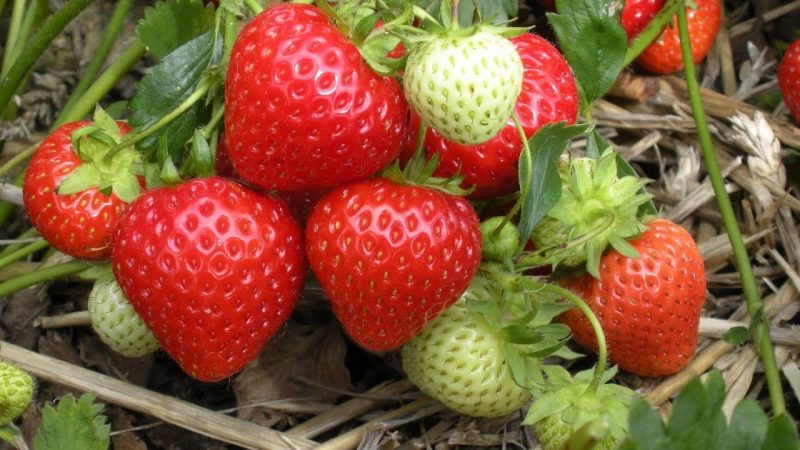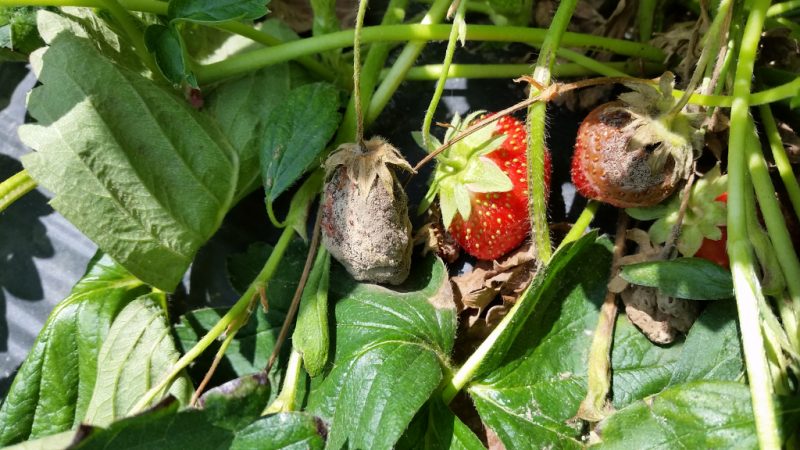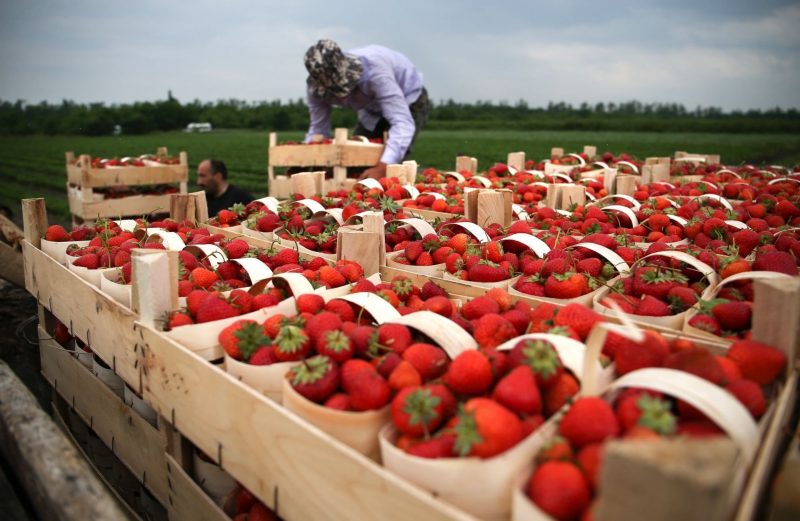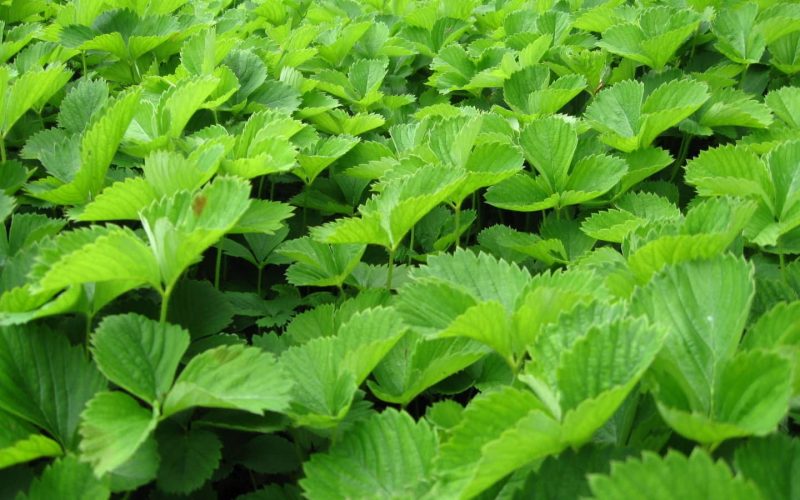If you want the whole summer season to have a berry crop, then a strawberry remover is the best choice. Such varieties yield several times, but are more vulnerable than garden strawberries.
Material Content:
The best varieties of repair strawberries
So what does “remodeled strawberry” mean? What are its features and advantages?
From ordinary varieties of strawberries remontant distinguish:
- several stages of harvesting;
- precocity.
But this species has strawberries and cons:
- bushes grow old quickly;
- the berries are not so tasty;
- plants are weaker.
There are varieties of remotant strawberries with small and large berries.
- Excellent varieties for the site are small-fruited. These are Ali Baba, Forest Tale, Ruyan and Rügen. They are characterized by unpretentiousness in care and guaranteed high productivity.
- Unlike small-fruited, large-fruited species give berries only two to three times per season. But the weight of each berry can reach 70 g. The best varieties are Evi-2, Dynamite, Temptation and Moscow Delicacy.
Large-fruited varieties have powerful, large and sprawling bushes and boast a consistently high yield.
Breeding methods
There are three ways to propagate strawberries. The first method is seed, and it is used for growing seedlings. It is much easier to propagate the berry with a mustache or by dividing a bush.
The berries of the second crop in the cultivation of this crop mustache will have to sacrifice. The best time to bookmark new beds is August. Strawberries planted at this time have time to take root and yield a consistently high yield for the next season.
- When the first wave of fruiting begins, one should notice the strongest bushes on which the berries are the largest. From them you must take a mustache.Moreover, only the first arrows are selected for landing. The shoots are simply laid out on the sides of the beds in the prepared grooves.
- All other shoots, which are usually weaker, should be trimmed on the plants.
- When small rosettes grow on the mustache, you need to leave only the first of them rooted. After the first outlets, you must shorten the mustache.
- Around young outlets, the earth must be constantly loosened and moistened.
- In August, it will be possible to separate the sprouts from the mother bush by cutting off the mustache.
- Then the sockets are transplanted to a permanent bed. 35 cm are left in the row, and the aisles should be equal to 50 cm.
An emergency method of reproduction is the division of bushes. It is usually used if planting is necessary to move to another site and at the same time expand.
Bushes that are more than 2 years old are suitable for this method. Usually by this age, each adult bush consists of approximately 30 horns.
The horn has its own outlet, which you need to separate. Such plants are divided only in spring or autumn. The first days you need to spill outlets every day. All varieties of removable strawberries that do not give a mustache can be propagated in this way.
Growing seedlings from seeds
If you need to get a lot of berry, then you can grow a crop from seeds.
This requires:
- At the end of winter, soak the seeds for 3 days in melt water. Water should be changed.
- Fill the seed boxes with a soil mixture of 2 parts of humus, part of garden soil, part of sand. The soil must be deeply moistened.
- Strawberry seeds are so small that they are simply scattered on the surface of the soil mixture and gently pressed with their palms. Top of the landing should be covered with a film. It is desirable that the room was about +23 ºС.
- As soon as the shoots appear, the boxes are rearranged in the sun. But it is necessary to ensure that the soil does not dry out.
- After 2 weeks, the seedlings dive, leaving 3 cm between them.
- Already in May, seedlings can be planted.
Technology of planting a plant in the ground
It doesn’t matter which breeding method is chosen, the main thing is not to violate the planting technology.
Not everyone knows how to plant strawberries correctly, and lose their crops. Each strawberry bush has a heart, which in no case can be buried during planting in the ground. It can not be sprinkled with earth, but it should not be much higher than soil level.
Correct landing of the outlet - the heart should be at ground level.
The next day, you should inspect the beds, and, if necessary, sprinkle with too high planted bushes. Those bushes, the heart of which will be too deeply buried, need to be lifted.
For planting, beds are prepared.
- Dig the earth and mark the holes.
- The distance in the row between the bushes is about 35 cm. There should be about 50 cm between the beds.
- After planting, the plants are well shed and necessarily mulched. A layer of mulch will protect the strawberries from drying out and facilitate the work of the gardener, because you will not need to loosen the beds and fight weed grass.
The rules for the maintenance of maintenance strawberries
Growing and caring for maintenance strawberries include:
- watering;
- top dressing;
- fight against weeds;
- pruning
- disease prevention.
You need to water this crop more often than garden strawberries. After planting, it is shed every day, and then it is enough to do it only two to three times a month. It is watered only in the evening, when the heat has already subsided. Soil should be soaked 3-4 cm. The next day, the soil is immediately covered with mulch or gently loosened so that air enters the roots.
The fruiting of the repairing varieties is very plentiful, so timely feeding of plants is important. In May, urea is added under the bushes, while manure is being added to the buds of the second crop. Usually this period falls in June. Along with organic, mineral supplements are also beneficial.
During the summer season, plants should be fed at least 10 times with an interval of two weeks. This is the basis for caring for this crop.
Also important in care and trim.The procedure is carried out only once a year, preferably in the fall. When the berries are picked, the lower leaves are removed and the upper leaves are left. If all mustaches are cut in the summer, then the lower leaves must be removed in the fall!
Pest and Disease Control
- Due to damp and cool weather, this berry can get gray rot. Plants are covered with a fluff, against which copper oxide treatments are used. Sick berries must be collected and taken out of the site.
- Strawberry leaves may begin to curl and dry - it is powdery mildew. All diseased specimens will have to be destroyed, and the remaining bushes treated with a solution of manganese.
- Also, strawberry leaves can be affected by brown spotting. Because of this disease, the foliage curls and takes on a brown tint. Plants must be treated with copper chloride.
The most dangerous pest of repair strawberries is a strawberry tick. This insect is transparent and therefore hardly noticeable, but does irreparable harm. After the tick attack, the leaves begin to curl, the bushes stop growing and the plants slowly die. You can get rid of the parasite by spraying the plantings after picking berries “Karbofosom”.
Young plants are often attacked by aphids. Usually colonies of parasites live on buds. You can scare away insects by spraying a 72% solution of brown household soap.
Harvesting and Aftercare
So that after strawberries there is no chaos in the strawberry bed created by dying leaves and mustaches, you should cover the ground with a layer of artificial mulch. Spunbond is perfect for these purposes.
This material greatly facilitates the work of the gardener:
- no need to loosen the soil;
- do not add bushes after watering, when the roots are bare;
- there is no need for frequent watering;
- strawberries become less susceptible to gray rot;
- the mustache does not take root and is easily trimmed.
If the mulch is not laid, then the first thing to do after collection is to loosen the soil.
This should be done immediately, until the sockets have grown too much. When weeding, bare roots are covered with soil.
Possible growing problems
It happens that repairing varieties refuse to bloom and bear fruit. What is the problem?
- Perhaps the plants are already old. After the third year, strawberries cease to bloom. Bushes need to be updated every three years.
- The reason may be hidden in too late landing in the autumn. Plants simply could not have time to adapt.
- Also, if the hearts were too deep when planting, the bushes will not bloom.
- Lack of sunlight is another reason why this crop does not bear fruit.
Repair strawberries can bear fruit from May to the end of October. But this rate of fruiting greatly weakens the berry, and therefore it needs careful care.


